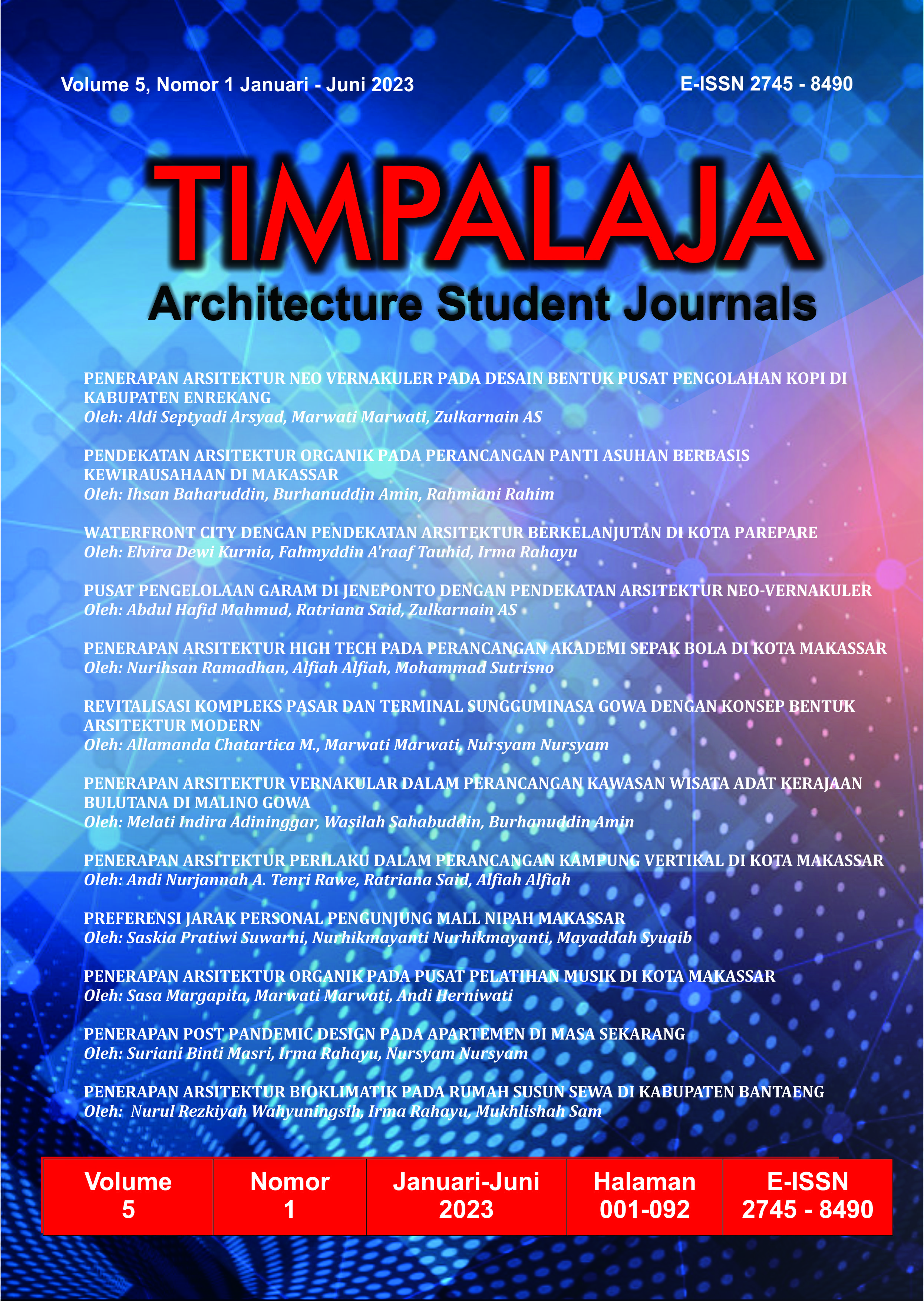Penerapan Arsitektur Perilaku Dalam Perancangan Kampung Vertikal Di Kota Makassar
Abstract
Population density is an essential issue for a country, especially Indonesia, because of its enormous impact on its progress. Demographically and in terms of development aspects, Makassar City is one of the largest cities in Indonesia, with various ethnic groups living. As a service center in the eastern region of Indonesia, Makassar City plays a role in trade and service centers, industrial activities, government activities, freight and passenger transportation service nodes, land, sea, and air, and education and health service centers. This then causes the population growth rate in Makassar City to become uncontrollable and, of course, causes problems in the housing sector. The negative physical aspects that arise require a strategy to solve them. To overcome this, vertical villages can be used to reduce slum settlements and for the need for land for housing in urban areas, especially Makassar City. The design of vertical villages uses a behavioral architectural approach because this approach can respond to human needs and feelings that adapt to the human lifestyle in it. In reality, an architect’s imagination in the design process will produce different results after the process of use or occupancy. For this reason, it is necessary to understand basic human needs and how architectural design relates to human and environmental behavior. The selection of the design location was also based on various criteria or considerations, including being in the city center, an area with a high population density, and an integrated residential area.
References
Haryadi,Setiawan.B., (1995). Arsitektur Lingkungan dan Perilaku, Proyek Pengembangan Pusat studi Dirjen Dekbud. Yogyakarta.
Hendro, Prabowo. (2003). Arsitektur, Psikologi dan Masyarakat. Gunadarma: Jakarta.
Laurens, Joyce Marcella. (2004). Arsitektur dan Perilaku Manusia. Jakarta: PT Grasindo.
Pamekas, R. (2013). Pembangunan dan Pengelolaan Infrastuktur Kawasan Permukiman. Bandung: Dunia Pustaka Jaya.
Setiawan, B dan Haryadi. (2010). Arsitektur Lingkungan dan Perilaku. Yogyakarta: Gadjah Mada University Press.
Sing, Y. (2011). Keberagaman Kampung Vertikal. Retrieved Mei 14, 2019, from rumahyusing.blogspot.com: http://rumah-yusing. blogspot.com/2011/01/ keberagaman-kampung-vertikal.html.
Snyder, J. C., & Catanese, A. J. (1984). Pengantar Arsitektur. Erlangga, Jakarta.
Tandal, Anthonius N, dan I Pingkan p Egam. (2011). Arsitektur Berwawasan Perilaku (Behaviorisme). Media Metrasain Vol 8 No 1, Mei 2011: 53-67.
Copyright (c) 2023 Andi Nurjannah A. Tenri Rawe, Ratriana Said, Alfiah Alfiah

This work is licensed under a Creative Commons Attribution-ShareAlike 4.0 International License.
By submitting your manuscript to our journal, you are following Copyright and License







